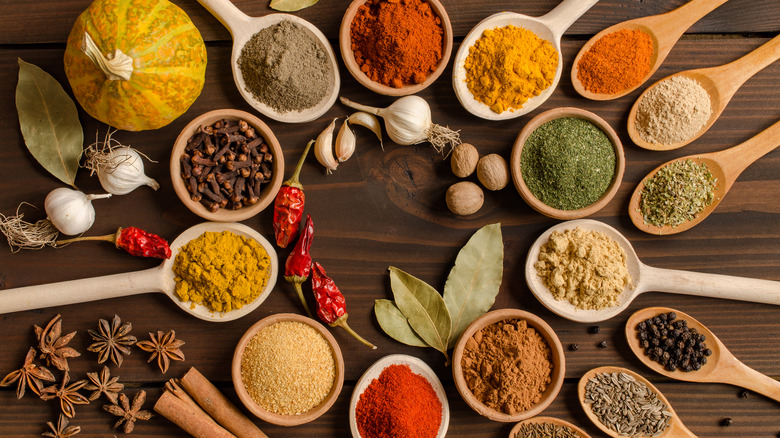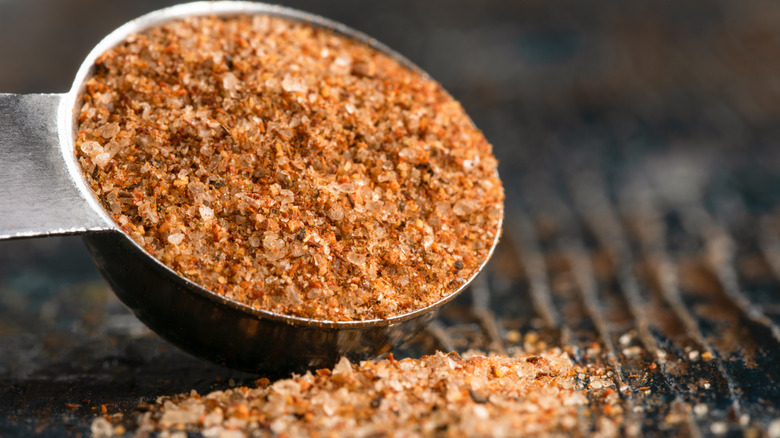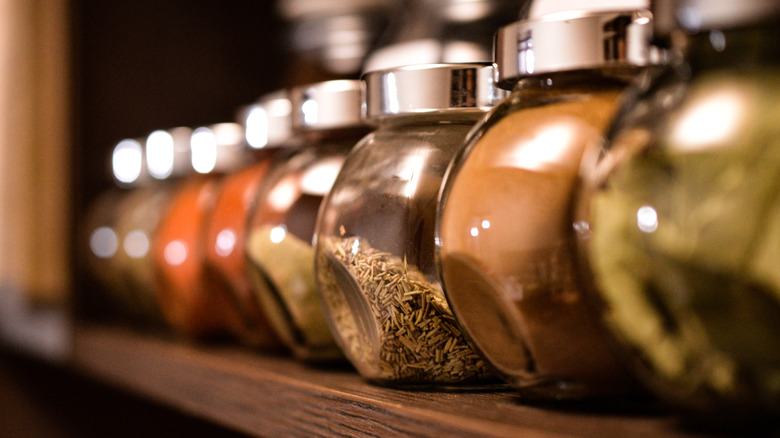The Seasoning Blend That's Hard To Find Outside The US
As Americans, we are far more used to the idea that there are certain foods you can only get outside of the country and don't always think about the food that people outside the U.S. can only get here. Being a country of immigrants, most American cooking has either evolved from other cuisines or been copied outright from other countries. This isn't a criticism or a bad thing — the wild diversity of cooking you can find in American cities is one of the best things about our country and immigrant adaptations of dishes are no less authentic or delicious than the recipes they were based on. It does mean though, that when we think of the food we eat and the ingredients we use, they are almost all available in the countries where they originated.
That one way street for ingredients applies to spices and spice blends in particular. We use paprika, za'atar, onion powder, or garam masala, but all those are available around the world, or at least in their countries of origin. The U.S. has produced unique dishes, from buffalo wings to deep dish pizza, but even they use spices that are common in other countries.
So, is there any commonly used American seasoning that would perplex someone from Italy or Brazil the same way the options on their grocery store shelves might confuse us? There actually is, and unsurprisingly, it comes from one of the most original regional cuisines this country has ever produced.
Cajun seasoning is a very American product
Louisiana has maybe the most complex food culture in the U.S., with a particular colonial history that brought in a range of outside influences. The two traditions of Cajun and Creole cooking are both descended from this history, even though they are not the same thing. Creole food was born in New Orleans and was the product of intermingling between the immigrant groups that built the port city, not just the French and Spanish, but Italian, and Caribbean as well. Cajun cooking was also born from immigrants, but more specifically the French, who both colonized the area and came there as refugees after the British conquest of Canada. Over time, their traditions blended with Southern American food to become the distinct style of Cajun.
It's this very American clash of cultures that produced Cajun seasoning, a distinct blend of spices that is not very common on store shelves in other countries. There is no one exactly correct mix of ingredients in Cajun seasoning, but it's heavily based around pepper, with white, black, paprika, and cayenne bringing a deep and complex heat to the blend. It's used in all sorts of places in Louisiana cuisine, from flavoring fried fish to the Cajun version of jambalaya.
Cajun seasoning is available in pre-made blends from most grocery stores in the U.S., but if you're outside the country, you may have to make your own.
How can you make Cajun seasoning?
True to the spirit of any homestyle cooking, your Cajun seasoning is going to come down to personal taste. But there are a few base ingredients to start with: Black pepper and paprika are essential, and the warm heat of cayenne appears in almost every version of the spice mix. Onion and garlic powders are also very common to give the mix a little allium depth. Oregano is the most popular herb, and other options like thyme and basil will make your Cajun spice closer to Creole seasoning, which goes heavier on the herbal flavors as opposed to the pepper focus of Cajun. A tablespoon each of paprika, onion, and garlic should make up the base of your spice blend, and the hotter ingredients like cayenne or flavoring like oregano can start with a teaspoon each. As we said, in the end, it's going to come down to personal taste, so make it as mild or hot as you would like.
From there you can go wild and experiment with different variations, including your own favorite spices. White pepper can add an extra peppery kick without too much heat, or you can double down on spice with some red pepper flakes. Mustard powder, coriander, and thyme are not uncommon additions either. Just remember to taste as you go and have restraint with new ingredients, because you can always add more, but you can't take them out once they're mixed in.


